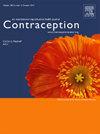一项关于宫内节育器放置疼痛管理选择的神秘来电者研究。
IF 2.3
2区 医学
Q1 OBSTETRICS & GYNECOLOGY
引用次数: 0
摘要
目的:了解诊所是否提供通过电话放置宫内节育器(IUD)的疼痛管理方案,以及这些方案是否与放置期间有效控制疼痛的现有证据一致。研究设计:我们使用神秘购物者方法和标准化的电话记录从www.bedsider.org.Results上列出的100家诊所的多样化、有目的的样本中收集信息:我们联系了100家选定诊所中的90家的应答人员,其中32家(36%)不会通过电话或非既定患者提供有关宫内节育器放置疼痛控制的信息。在58家提供信息的诊所中,4家(6.9%)报告称他们没有提供任何疼痛管理的选择,54家(93.1%)提供至少一种药物选择。最常见的是布洛芬,49家诊所(84.5%)提到了布洛芬。利多卡因、米索前列醇和萘普生分别有16家(27.6%)、14家(24.1%)和3家(5.2%)被提及。结论:超过三分之一的诊所无法通过电话提供疼痛控制方案。在58家诊所中,向模拟患者提供了要求放置宫内节育器的选择,基于证据的疼痛控制方法,如利多卡因阻滞、10%利多卡因喷雾或萘普生,并不经常出现。结论:考虑到疼痛和术前焦虑对宫内节育器使用的障碍,临床工作人员了解宫内节育器放置过程中疼痛管理的现行指南以及诊所提供的宫内节育器放置疼痛控制方案是很重要的。本文章由计算机程序翻译,如有差异,请以英文原文为准。
A mystery caller study on pain management options for intrauterine device placement
Objectives
To understand whether clinics present pain management options for intrauterine device (IUD) placement over the phone and whether these options align with current evidence for effective pain control during placement.
Study design
We used a mystery shopper approach and a standardized call script to collect information from a diverse, purposive sample of 100 clinics listed on www.bedsider.org.
Results
We reached responsive personnel at 90 of the 100 selected clinics, of whom 32 (36%) would not provide information about pain control for IUD placement by phone or to non-established patients. Of the 58 clinics that provided information, four (6.9%) reported that they did not provide any options for pain management, and 54 (93.1%) presented at least one pharmaceutical option. The most common was ibuprofen, which was mentioned by 49 clinics (84.5%). Lidocaine, misoprostol, and naproxen were mentioned by 16 (27.6%), 14 (24.1%), and three (5.2%) clinics, respectively.
Conclusions
More than one third of clinics were unable to present pain control options over the phone. Among the 58 clinics that presented options to simulated patients calling to request an IUD placement, evidence-based pain control methods, such as lidocaine blocks, 10% lidocaine spray, or naproxen, were not often presented.
Implications
Given the barriers that pain and pre-procedure anxiety pose to uptake of IUDs, it is important for clinic staff to understand current guidelines for pain management during IUD placement as well as the pain control options offered for IUD placements at their clinic.
求助全文
通过发布文献求助,成功后即可免费获取论文全文。
去求助
来源期刊

Contraception
医学-妇产科学
CiteScore
4.70
自引率
17.20%
发文量
211
审稿时长
69 days
期刊介绍:
Contraception has an open access mirror journal Contraception: X, sharing the same aims and scope, editorial team, submission system and rigorous peer review.
The journal Contraception wishes to advance reproductive health through the rapid publication of the best and most interesting new scholarship regarding contraception and related fields such as abortion. The journal welcomes manuscripts from investigators working in the laboratory, clinical and social sciences, as well as public health and health professions education.
 求助内容:
求助内容: 应助结果提醒方式:
应助结果提醒方式:


